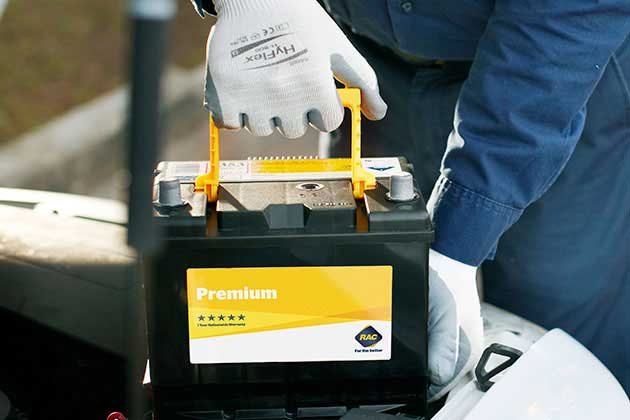Car batteries truly are the unsung heroes of our vehicles, providing the vital spark that brings them to life every time we turn the key. But these little power packs that provide the spark to start our engines can also pose safety risks if they’re not handled properly.
Battery acid, electric shocks and even explosions are all potential hazards you could face if batteries aren’t handled properly, so it's crucial to prioritise safety when dealing with these automotive workhorses.
Gearing up for battery safety
Before diving into your car's hood, it’s important to equip yourself with the right protective gear so you can handle your car’s battery in the safest possible way:
Safety glasses: These help shield your eyes from potential splashes of acid or flying debris.
Rubber gloves: These will protect your hands from potential acid burns or electric shocks.
Long sleeves and pants: Cover your skin to avoid contact with acid.
Good quality boots: Go for closed-toe shoes or boots to protect your feet from dropped tools or battery acid spills.
Make sure you neutralise the charge
Before touching the battery terminals, make sure the engine is off and all electrical accessories are off (lights, radio, fans, etc). This will minimise the risk of any sparks or accidental electrical shocks.
Identify the terminals
Car batteries have two terminals: positive (typically marked with a red plus sign) and negative (marked with a black minus sign).
Be mindful of their polarity, as accidentally touching them together can cause some decent sparks (don’t worry – these will scare the bejesus out of you) or even explosions.
Cleaning up the corrosion
Battery terminals will often develop corrosion – a white or green crusty buildup that will impede the flow of electricity and shorten your battery's lifespan.
If you want to find out more about corrosion in car batteries, read our articles What to do if your car battery is corroded or Why do car batteries corrode?.
To clean the terminals on your car battery safely:-
- Disconnect your battery cables: Use a wrench to loosen and remove the negative cable first, followed by the positive cable (wearing the appropriate safety gear of course).
- Neutralise the corrosion: Add a baking soda and water paste to the terminals and let it sit for a few minutes (it should bubble when it hits the corrosion).
- Scrub and rinse: Use a wire brush or specialised terminal cleaner to scrub away the corrosion, then rinse thoroughly with clean water (being careful of the splashback).
- Protect the terminals: Coat the cleaned terminals with a light layer of petroleum jelly to help prevent any further corrosion.
Lifting with care
If you’ve never had to lift one before, car batteries are surprisingly heavy, so make sure you lift them with the proper technique to avoid injury (trust us, you really don’t want to throw your back out). Bend those knees, keep your back straight, and engage your core muscles to avoid straining yourself and your back muscles. Often batteries will have specialised handles to help get a secure grip.
Ensure safe disposal
You can’t simply toss your old car battery in the wheelie bin. Lead-acid batteries contain many hazardous materials that require proper recycling or disposal. You can check with your local auto parts store or recycling centre for safe disposal options. Often your local tip will have a battery section specifically for disposing of car and marine batteries.
Here’s some bonus safety tips
- Make sure you don’t smoke or use open flames near a car battery.
- Try to avoid leaning over the battery when you’re working on it.
- Be wary of any metal tools that could accidentally short-circuit the terminals.
- If you experience any skin or eye contact with battery acid, make sure you flush the affected area immediately with clean water and seek medical attention as soon as possible.
If you follow these essential safety precautions, you can handle car batteries with confidence, making sure you have a smooth and hazard-free experience.
Remember that a little awareness and preparation goes a long way in keeping yourself and your loved ones safe around these sometimes dangerous automotive components.

